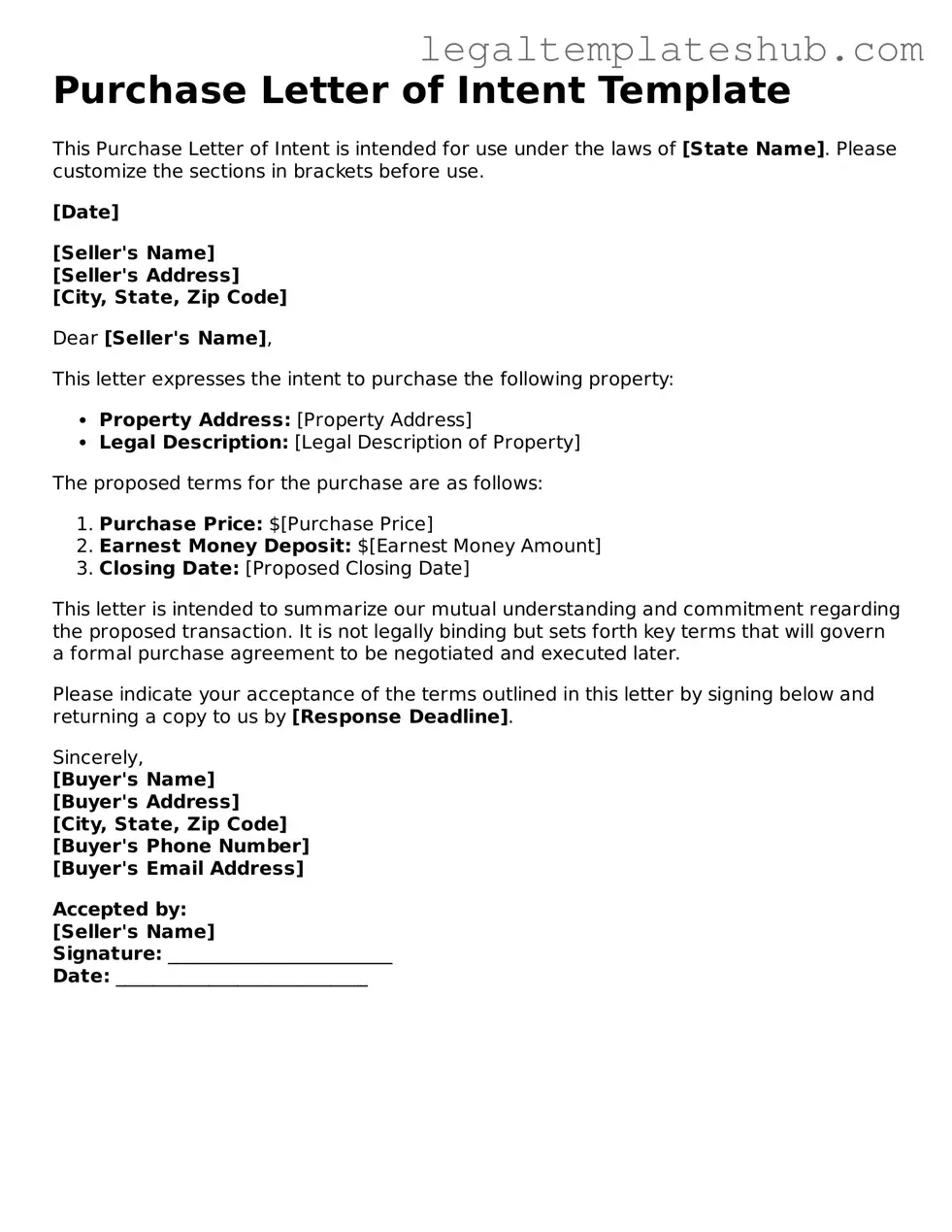Printable Purchase Letter of Intent Template
A Purchase Letter of Intent (LOI) is a document that outlines the preliminary agreement between a buyer and seller regarding the sale of a property or business. It serves as a roadmap for the transaction, detailing key terms and intentions before formal agreements are drafted. Understanding this form is crucial for both parties to ensure a smooth negotiation process.
To get started, fill out the Purchase Letter of Intent form by clicking the button below.
Access Editor
